Aero-News pays tribute to the following aviators -- in body and
in spirit -- who slipped the surly bonds of Earth in 2008 -- some
of whom were close friends, and all others our friends in spirit --
and extends our sincere sympathies to their families, and to any of
our readers who also lost a loved one last year...
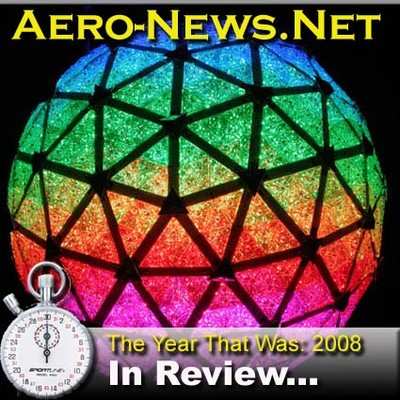
Florida aviation legend Owen H. Gassaway Jr. didn't make his
name in the aviation community by flying planes, but by managing
and servicing them... and, making a well-known airport what it is
today. Gassaway (below) passed away December 27, 2007 at the age of
83. He started his career in aerospace out of high school, working
as an aircraft mechanic at Morrison Field (known today as Palm
Beach International Airport) and for the Civil Air Patrol. After
service in the US Army during World War II, Gassaway established an
aircraft sales and service business at Lantana Airport... which
under his stewardship rose to become one of the premier general
aviation airports on the East Coast.
ANN Report January 7
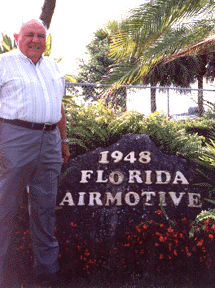
A legend among flight instructors in Baton Rogue, LA passed away
January 14. Eddie Duffard, who taught literally thousands of people
how to fly and logged over 65,000 hours in the air doing it, was a
World War II Navy veteran, and later worked for chemical
manufacturing and supply company Ethyl Corp. But he spend much of
his time either at Metro Airport (BTR), or plying the skies above
it.
ANN Report January 16
John W. Myers, businessman and renowned World War II test pilot
of extraordinary skill, died January 30 at the age of 96. Described
as "a legend of legends" by hotel magnate and pilot Barron Hilton,
we was a role model for an entire generation of test pilots.
ANN Report February 3
Aviation pioneer Frank Piasecki, who developed the tandem-rotor,
heavy-lift helicopters now in service with US armed forces
throughout the world, passed away February 11 at the age of 88. The
second American to fly a helicopter (after Igor Sikorsky) Piasecki
continued on and developed the tandem-rotor helicopter -- known
initially as "the flying banana," due to the curved rear fuselage
necessary to elevate the rear rotor above the forward one.
Variations on Piasecki's design are in service today -- you may
know them better as the US Army's CH-47 Chinook, and the Naval
CH-46 Sea Knight, now produced by Boeing.
ANN Report February 13
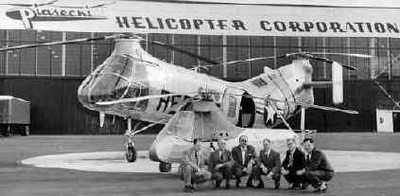
Laurence J. Adams, who once ran one of the country's largest
aerospace companies and assisted with investigating the Challenger
disaster, passed away February 13 at the age of 86. Adams became
president and CEO of Martin Marietta in 1983, 35 years after he
joined the company as an apprentice engineer, according to the
Washington Post. He retired three years later... but continued his
work in the aerospace industry. In 1986, Adams served on the
National Academy of Sciences panel that advised NASA on the
redesign of the solid rocket boosters used on the space shuttle
program, following the January 28 loss of the Challenger due to a
defective O-ring seal. It was in that role Adams earned the last of
his three NASA Public Service Medals.
ANN Report February 23
If you've ever been alerted by the urgent warnings from your
cockpit-mounted collision avoidance system, calling your attention
to nearby traffic you hadn't seen... you have George B. Litchford
Sr. to thank. The prolific inventor (below), who worked on aircraft
navigation and surveillance systems for some 60 years, passed away
February 28 at the age of 89. Litchford was hired by Sperry
Gyroscope Research Labs in 1941, and set about trying to find a way
to alert pilots to nearby hazards. It was Litchford who determined
signals from an aircraft's transponder could be used not only by
controllers on the ground, but also by other aircraft... and the
idea of the Traffic alert and Collision Avoidance System, or TCAS,
was born.
ANN Report March 12
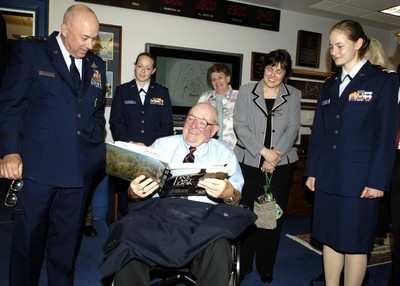
The desire for humans to travel into space was instilled in G.
David Low from an early age. The son of former NASA director George
Low -- who first suggested to President Kennedy in 1960 it was
possible for an astronaut to walk on the moon by decade's end -- G.
David Low would go on to spend 12 years as an astronaut, flying
onboard three shuttle missions. The younger Low did a lot of living
in the short 52 years he spent on Earth, and orbiting above it...
but in the end, Low succumbed to that all-too earthbound of ills.
Low passed away March 15, following a bout with colon cancer.
ANN Report March 24
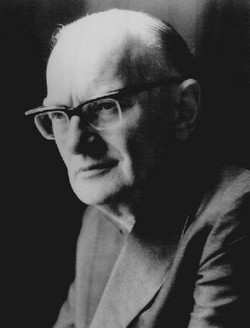 More than "just" a
writer of science fiction tales, Arthur C. Clarke was a
visionary -- the true embodiment, in fact, of that term so often
applied to many within the aerospace field. On March 19, Clarke
passed away in his adopted home of Sri Lanka at the age of 90,
following a decades-long battle with post-polio syndrome. While he
wrote a number of short stories and books -- including "The
Sentinel," "Childhood's End," "The City and The Stars," and
"Rendezvous with Rama" -- Clarke is best known to the masses as the
author of "2001: A Space Odyssey," the novelization of the movie by
the same name. Clarke wrote the book while working on the
screenplay of the classic 1968 sci-fi film with Stanley Kubrick. ANN Report March 19
More than "just" a
writer of science fiction tales, Arthur C. Clarke was a
visionary -- the true embodiment, in fact, of that term so often
applied to many within the aerospace field. On March 19, Clarke
passed away in his adopted home of Sri Lanka at the age of 90,
following a decades-long battle with post-polio syndrome. While he
wrote a number of short stories and books -- including "The
Sentinel," "Childhood's End," "The City and The Stars," and
"Rendezvous with Rama" -- Clarke is best known to the masses as the
author of "2001: A Space Odyssey," the novelization of the movie by
the same name. Clarke wrote the book while working on the
screenplay of the classic 1968 sci-fi film with Stanley Kubrick. ANN Report March 19
Another member of the famed Doolittle Raiders passed. Former
Staff Sgt. Jacob "Jake" DeShazer, 95, died March 20 in an assisted
living facility in Salem, OR. DeShazer was bombardier on the last
of 16 bombers that took part in the Doolittle Raid, a daring
airstrike against Japan in April 1942.
ANN Report March 20
Autogiro proponent Steven Pitcairn passed away March 29, at the
age of 83. Steven was the son of Harold Pitcairn, the founder of
Pitcairn Aircraft and the original license holder to built autogiro
aircraft based on the designs of inventor Juan de la Cierva. A
subsidiary of the aircraft manufacturer, Pitcairn Airways, was the
founding company for what later became Eastern Airlines. Building
upon his father's legacy, Steve Pitcairn was a successful
businessman in his own right, and an aviation enthusiast in the
broadest sense.
ANN Report April 3
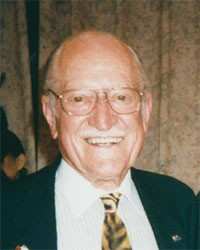 Dick Rossi, who downed
six Japanese planes while serving with the Flying Tigers, died
April 17 of complications from pneumonia. Rossi, 92, came from a
family of 10 kids, grew up in Placerville, CA and studied
electrical engineering for two years at the University of
California at Berkeley. But he couldn't shake his dreams of flying
and adventure, so he joined the Navy in 1939. He qualified for
flight training, but wound up as a flight instructor in Pensacola,
not exactly satisfying his craving for adventure. Before the US
officially entered World War II, Rossi learned of a secret
volunteer group being formed to battle Japanese air attacks against
China. Rossi resigned his Navy commission to earn 600 dollars a
month, with a bonus of 500 dollars for each Japanese plane shot
down.
ANN Report April 30
Dick Rossi, who downed
six Japanese planes while serving with the Flying Tigers, died
April 17 of complications from pneumonia. Rossi, 92, came from a
family of 10 kids, grew up in Placerville, CA and studied
electrical engineering for two years at the University of
California at Berkeley. But he couldn't shake his dreams of flying
and adventure, so he joined the Navy in 1939. He qualified for
flight training, but wound up as a flight instructor in Pensacola,
not exactly satisfying his craving for adventure. Before the US
officially entered World War II, Rossi learned of a secret
volunteer group being formed to battle Japanese air attacks against
China. Rossi resigned his Navy commission to earn 600 dollars a
month, with a bonus of 500 dollars for each Japanese plane shot
down.
ANN Report April 30
An astronomer and computer specialist who went on to fly on two
space shuttle missions lost a three-year battle with brain cancer.
Former shuttle payload specialist Dr. Ronald A. Parise, PhD, died
at his home in Silver Spring, MD on May 9. He was 56. Parise was
one of the developers of the Ultraviolet Imaging Telescope, and
used the device to study stars and other celestial objects during
shuttle missions in 1990 and 1995.
ANN Report May 13
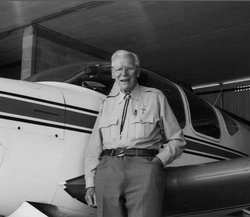 Accomplished pilot,
engineer and rotorcraft pioneer John M. Miller left us June 23, at
the age of 102. If you're not a gyroplane enthusiast, you may not
have heard of Captain Miller before... and that's unfortunate. He
contributed much to aviation in general, and served as a feisty
example of how to enjoy one's golden years. In a 2007 interview,
Miller said that he still remembered, if not clearly, the moment
when the aviation bug bit him. It was May 29, 1910. John was 4
years old, and he saw Glenn Curtis fly down the Hudson River to
claim a $10,000 prize offered by the New York World newspaper for a
flight to New York City from the state capital in Albany. His later
introduction to aerobatic flight, and witnessing of Charles
Lindbergh's departure on his transatlantic record flight, cemented
his life's course.
ANN Report June 25
Accomplished pilot,
engineer and rotorcraft pioneer John M. Miller left us June 23, at
the age of 102. If you're not a gyroplane enthusiast, you may not
have heard of Captain Miller before... and that's unfortunate. He
contributed much to aviation in general, and served as a feisty
example of how to enjoy one's golden years. In a 2007 interview,
Miller said that he still remembered, if not clearly, the moment
when the aviation bug bit him. It was May 29, 1910. John was 4
years old, and he saw Glenn Curtis fly down the Hudson River to
claim a $10,000 prize offered by the New York World newspaper for a
flight to New York City from the state capital in Albany. His later
introduction to aerobatic flight, and witnessing of Charles
Lindbergh's departure on his transatlantic record flight, cemented
his life's course.
ANN Report June 25
The American Institute of Aeronautics and Astronautics (AIAA)
was saddened to announce the death on June 28 of Dr. Robert C.
Seamans Jr., AIAA past president and Honorary Fellow, former
secretary of the Air Force, and former deputy administrator of the
National Aeronautics and Space Administration. Seamans was the
ninth secretary of the Air Force, serving from 1969 to 1973,
following his service as deputy administrator of NASA from 1965 to
1968. During his tenure at NASA, Seamans worked closely with the
Department of Defense to improve cooperation between the two
agencies. After leaving public service, Seamans became a professor
of aeronautics and astronautics at the Massachusetts Institute of
Technology (MIT) in 1977, and was appointed dean of the
Institute’s Department of Aeronautics and Astronautics in
1978.
ANN Report July 2
To most of the world, Hiroaki "Rocky" Aoki will be known best as
the founder of the Benihana chain of Japanese steakhouses...
described as "equal parts restaurant, magic show and performance
art" by restaurant architect David Rockwell. But Aoki also left his
mark on the aviation world, before passing away July 10 at the age
of 69. Aoki was among four men who made the first successful
crossing of the Pacific Ocean by gas balloon. The Double Eagle V --
helmed by Aoki, Ben Abruzzo, Larry Newman, and Ron Clark -- flew
5,768 miles from Nagashima, Japan to California's Mendocino
National Forest in November 1981.
ANN Report July 15
He died as he lived, as they say... but that oft-repeated
sentiment is of little comfort to those who knew Dick Johnson, an
11-time national soaring champion who also claimed one world title
to his credit. Johnson, 85, was killed July 23 on what was to be a
routine flight near Midloathian, TX.
Johnson took flight around 12:00 pm local time, to check the
weather conditions over the North Texas community. Witnesses saw
his Schemmp-Hirth Ventus A dip below a treeline soon after release;
they found the wreckage a short time later, two miles south of the
field in a quarry.
ANN Report July 24
Another World War II flyer, and one of EAA's Timeless Voices,
went west July 28... and from AirVenture 2008, no less. Margaret
Ringenberg, 87, passed away in her sleep while in Oshkosh for the
annual air show. She was introduced to the lure of aviation at an
early age. At age seven, she took a flight with a barnstormer, and
by 1940, she had her pilot license in hand. Ringenberg
(below) went on to serve as a WASP (Women's AirForce Service
Pilots), flying BT-13's, AT-6's, PT-19's and UC-78's. She
co-piloted B-24's and C-54's. Aero-News profiled Ringenberg earlier
this year, when she was inducted into the Women in Aviation Pioneer
Hall of Fame.
ANN Report July 29
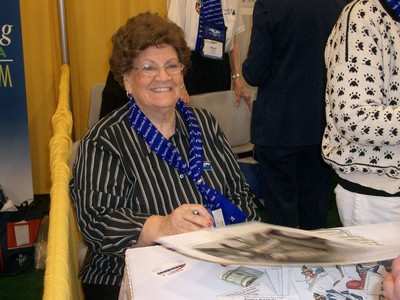
Alaska aviation pioneer Ray Peterson, who built a handful of
backwoods cabins into a florishing tourism business and airline,
died in his sleep August 14 in his Anchorage apartment at the age
of 96. Peterson got his start in aviation near Chicago in the
1930s, after a chance encounter with a biplane that landed in the
field where he was bucking hay. He arrived in Alaska via steamship
on April Fools' Day, 1934, and for the next several years flew
open-cockpit biplanes loaded with men and supplies to the Lucky
Shot Mine near Hatcher Pass. His job expanded with the onset of
World War II, to ferrying supplies and personnel for the military.
Among his passengers were high-ranking officers, and politicians.
ANN Report August 15
Ed W. "Too Tall" Freeman was an American Hero, who was once a
Captain, US Army Company A, 229th Assault Helicopter Battalion, 1st
Cavalry Division (Airmobile). Ed was one of the thousands who
served our nation in Vietnam... and a number of years after his
service was done, a grateful nation recognized that he deserved the
medal of Honor... and at a long overdue 2001 ceremony, one of
Vietnam's many heroes finally got the thanks he deserved. Freeman
passed away August 20.
ANN Report September 14
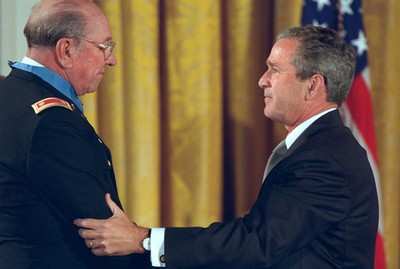
Project scientist Gerry Soffen called Israel Taback the "father
of the Mars Viking Lander"... parentage that Taback rejected with
his usual wry wit. Taback was more the understanding authority
figure, who kept the atmosphere surrounding the lander project
equally light and serious. Taback – who passed away on
August 30 -- played that role since Langley was the National
Advisory Committee for Aeronautics laboratory, and he helped
shepherd the X-15's instrumentation through its supersonic flights.
He carried the role through the transition into NASA, when he was
chief engineer of one of the first of the new agency's projects,
the Lunar Orbiter, which still ranks among NASA's most successful
missions.
ANN Report September 23
Richard Stephen Heyser, a retired US Air Force Lieutenant
Colonel and U-2 spy plane pilot who took the first reconnaissance
photos of secret missile launch sites during the 1962 Cuban missile
crisis, died October 6 at a nursing home in Port St. Joe, FL. In
October 1962, Heyser was one of 11 Air Force U-2 pilots who took
photos over Cuba, making five reconnaissance flights in nine days.
In a 2005 interview with the Associated Press, Heyser said that no
one was more relieved than he that the crisis ended peacefully,
stating he did not want to go down in history as the man who
started World War III.
ANN Report October 13
SpaceDev Founder and Board Member James Benson, 63, died
peacefully in his home October 10. Benson was diagnosed in 2007
with a glioblastoma multiforme brain tumor. He had resigned from an
operational role in SpaceDev in September 2006. Benson retained a
seat on the Board of Directors of SpaceDev where he had continued
to support the Company that he founded in 1997. Prior to founding
SpaceDev, Benson spent thirty years associated with the computer
field, spanning the era from the introduction of modern mainframe
computers, to the dominance of the computer industry by
microcomputers. Benson (below) invented modern full text computer
indexing and searching in 1984, and exploited the new field through
companies he founded, Compusearch and ImageFast of McLean, VA.
ANN Report October 12
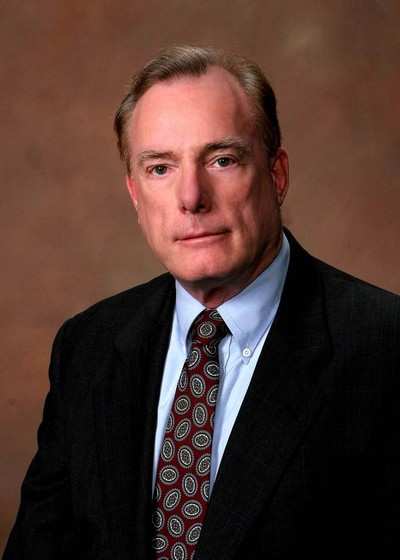
William "Badwater Bill" Phillips is killed when the Lancair
Legacy he was piloting goes down after takeoff from Parowan, UT
October 18. His wife, Janice, survives but is seriously injured.
ANN E-I-C Jim Campbell described Phillips as "possibly the most
unique personality I have ever met, an amazing mind and an
irascible old coot (irascible old coot pic below) who once made me
promise that if I ever had to write his obit, that I had to be sure
to tell everyone what a 'rat bast*rd' he was." Jim then added, "I
can't do it."
ANN Report October 20
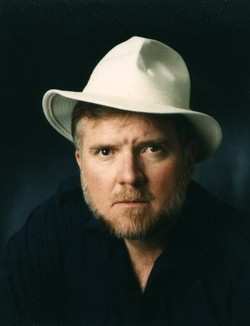
USAF Space Pioneer BG Maurice A. Cristadoro Jr. passed away
November 22. General Cristadoro was assigned to Western Development
Division as deputy director of the Atlas intercontinental ballistic
missile program and later as its program director. He was
responsible for all aspects of Atlas acquisition, which had the
highest national priority. He was among a very small group of
individuals intimately involved with the highly secretive
preparations for using an Atlas booster to launch Signal
Communications by Orbiting Relay Equipment, or SCORE, the world's
first communications satellite, in December 1958.
ANN Report November 28
Verne Orr, the fourteenth secretary of the Air Force, died
November 27 at age 92 in his home in Pasadena, CA. He served under
President Ronald Reagan from 1981 to 1985. Before becoming
secretary of the Air Force, Orr (below) taught government
finance courses at the University of Southern California Graduate
School of Public Administration from 1975 to 1980. He later served
on the Reagan Presidential Campaign Committee and was deputy
director of the office of the president-elect during the
transition.
ANN Report December 2
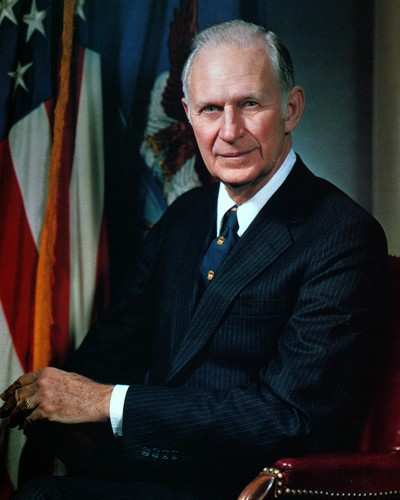
Philip Charles O'Keefe, 73, aeronautical engineer and former
director of the New England Air Museum, passed away December 23
after a long battle with Parkinson's Disease. He served in the US
Navy from 1954 to 1956 in the US, Guam and the Philippines as a
classified telecommunications specialist. He then graduated from
Tri-State University, Indiana with an Aeronautical Engineering
Degree. During his career as an aeronautical engineer, O'Keefe was
employed by Boeing, Honeywell, and UTC aircraft companies. ANN Report December 28
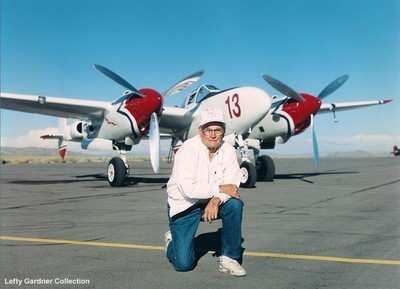
Lefty Gardner, whose P-38 "White Lightnin" was a staple at Reno
as well as at air shows throughout the country, passed away on
Christmas Eve at the age of 87. Gardner began flying in the Army
Air Corps at the age of 21, flying B-17s and B-24s on a combined 34
bombing missions over Europe during World War II. He received the
Distinguished Flying Cross and the Air Medal with Three Oak Leaf
Clusters for those efforts... and when his tour was over, Gardner
(above) returned to action flying nighttime relief operations in
support of POWs and the underground movement Sweden. Following the
war, Gardner earned a degree in agriculture from Texas A&M, and
with his brother started an Ag flying business in Crystal City.
Gardner honed his flying skill at the controls of "White
Lightnin"... racing the modified P-38 at Reno for over 25 years. ANN Report December 29
 Senator Pushes FAA to Accelerate Rocket Launch Licensing
Senator Pushes FAA to Accelerate Rocket Launch Licensing Classic Aero-TV: RJ Gritter - Part of Aviations Bright New Future
Classic Aero-TV: RJ Gritter - Part of Aviations Bright New Future Aero-FAQ: Dave Juwel's Aviation Marketing Stories -- ITBOA BNITBOB
Aero-FAQ: Dave Juwel's Aviation Marketing Stories -- ITBOA BNITBOB ANN's Daily Aero-Linx (10.27.24)
ANN's Daily Aero-Linx (10.27.24) ANN's Daily Aero-Term (10.27.24): Clearance Void If Not Off By (Time)
ANN's Daily Aero-Term (10.27.24): Clearance Void If Not Off By (Time)















